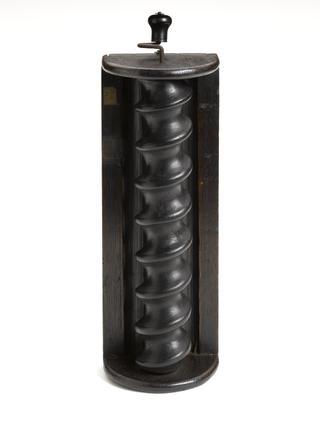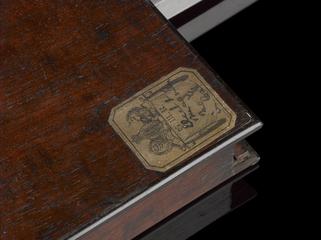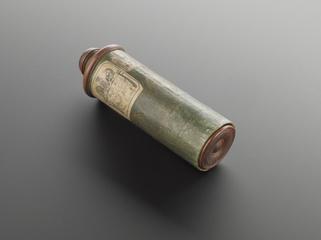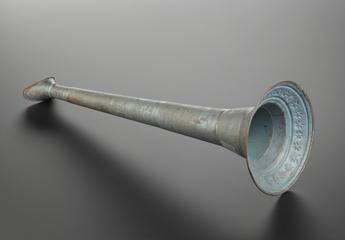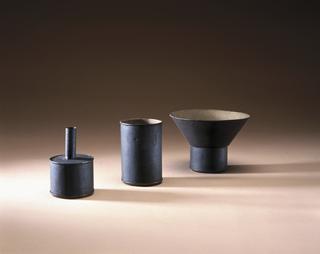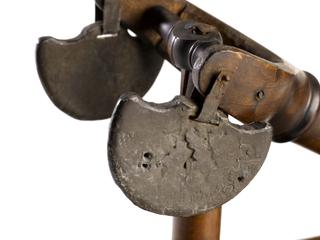
Demainbray's syphon
- Made:
- 1701-1752








Syphon, unknwon maker, before 1753, but once belonged to Stephen Demainbray.
This small copper vessel has a handle made from a piece of hollow copper pipe which acts as a syphon. It once belonged to Stephen Demainbray who used it in his lectures on natural philosophy. J. T. Desaguliers, another lecturer in natural philosophy and at one point a mentor to Demainbray, described the device as a 'Tantalus cup' and described a demonstration that involved filling the vessel with water, adding an apple or orange to raise the level above that of the top of the handle, and watching the water run out through the handle until the vessel was almost empty. Demainbray worked as superintendent at the King's observatory at Kew from 1768 and his collection of instruments and apparatus was absorbed into the King's own collection.
Details
- Category:
- King George III
- Object Number:
- 1927-1131
- Materials:
- copper
- Measurements:
-
overall: 195 mm x 170 mm x 110 mm, 0.45 kg
- type:
- physics demonstration equipment and syphons
- copyright:
- Unlinked Name
- credit:
- King's College, London
